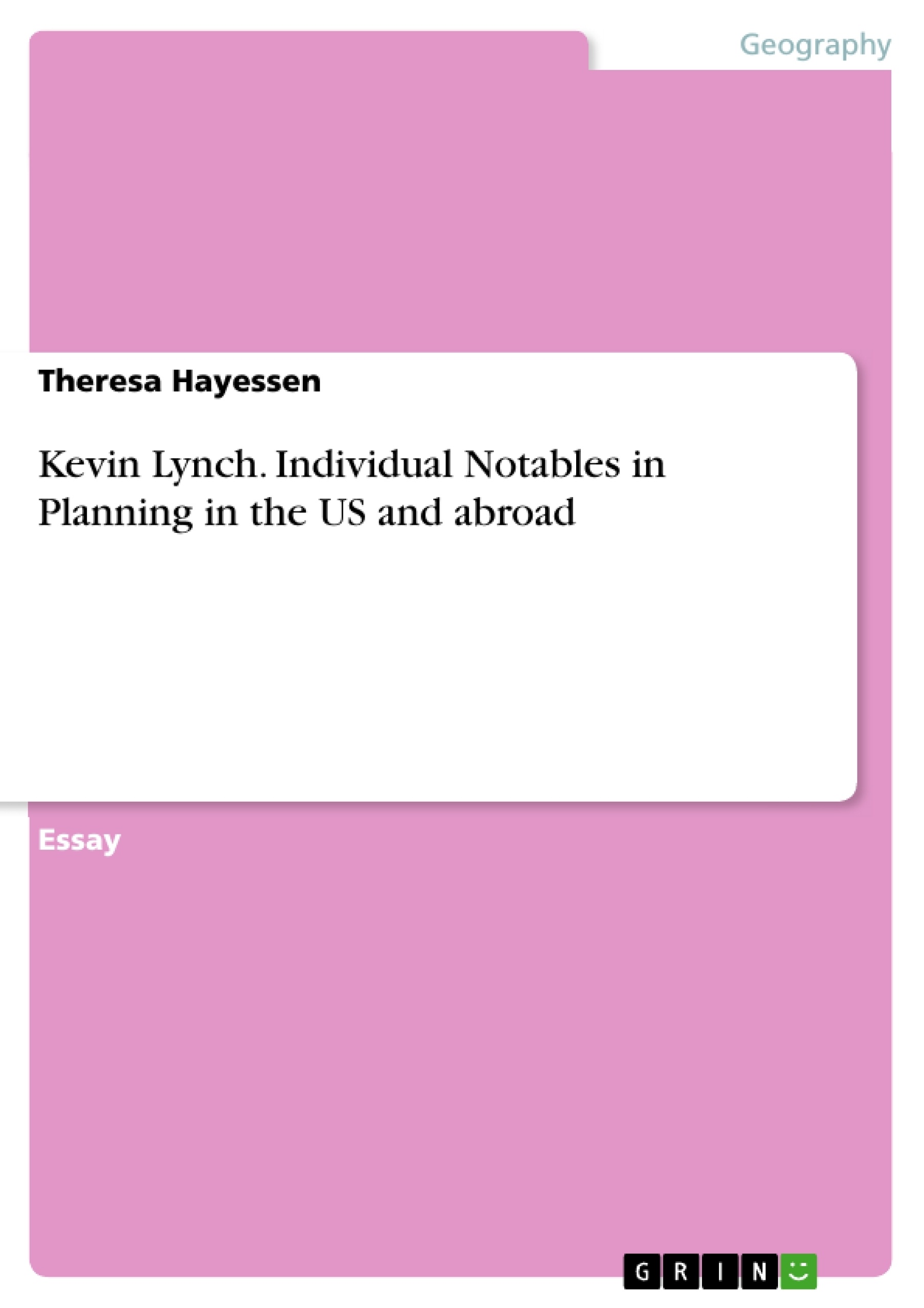Kevin Lynch is one of the key figures in environmental design and behaviorism in the field of city planning and city design in the 20th century. He devoted his career to research, writing, teaching, as well as to consulting in human environmental design.
He published seven books, approximately twenty-five journal articles and essays, including many sketches and drawings. Studying city planning without coming across his empirical research on how individuals perceive and navigate the urban environment is almost impossible.
Since my first day in University I learned and worked from his ideas and I was impressed by his theories and findings. I think the understanding of the look of urban environments and city planning would be a lot different today, if it had not been for Kevin Lynch, which is why I choose him for the paper on a notable individual.
Inhaltsverzeichnis (Table of Contents)
- U.S. City Planning Process
- Kevin Andrew Lynch
- The Image of the City
- Site Planning
- The View from the Road
- What Time is This Place
- Managing the Sense of a Region
- Growing Up in Cities
- Theory of Good City Form
- Wasting Away
Zielsetzung und Themenschwerpunkte (Objectives and Key Themes)
This text explores the life and work of Kevin Lynch, a prominent figure in the field of city planning and design. Lynch's research focused on the ways in which individuals perceive and navigate the urban environment, aiming to understand how urban design can better serve human needs and values.
- The importance of place legibility and urban spatial cognition in city design.
- The role of visual form and the perception of urban elements, such as paths, edges, districts, nodes, and landmarks.
- The impact of time and change on the urban environment and the potential for planning to manage these alterations.
- The relationship between the city and fundamental human values, such as justice, control, freedom, dignity, access, and creativity.
- The importance of considering the sensory experiences of urban environments and their influence on people's behavior and well-being.
Zusammenfassung der Kapitel (Chapter Summaries)
The text begins with a biography of Kevin Lynch, highlighting his education, career, and key influences. It then delves into his groundbreaking work, "The Image of the City," which explored the concept of place legibility and the ways in which individuals form mental maps of their urban surroundings. Subsequent chapters examine Lynch's further explorations of urban design principles, including his work on site planning, the impact of freeways on the visual environment, the influence of time on the city, and the importance of considering the sensory experiences of urban spaces. Lynch's later writings investigated the relationship between human values and city design, emphasizing the need for urban planning to prioritize human needs and aspirations.
Schlüsselwörter (Keywords)
This text focuses on the themes of urban design, place legibility, urban spatial cognition, environmental perception, human values, city planning, and the work of Kevin Lynch.
- Quote paper
- Theresa Hayessen (Author), 2014, Kevin Lynch. Individual Notables in Planning in the US and abroad, Munich, GRIN Verlag, https://www.grin.com/document/300194




